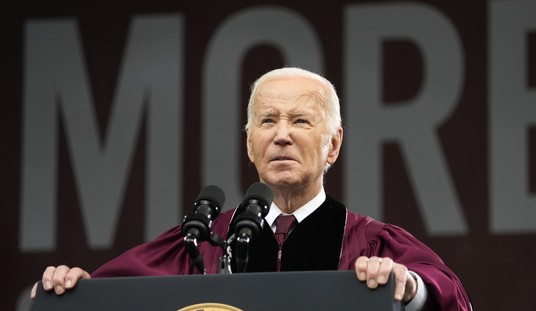New York Gov. Andrew Cuomo (D) may figure that becoming the first governor to champion and sign “free four-year college” legislation will give him a campaign slogan sure to appeal to fans of the socialist heartthrob of the 2016 presidential campaign, Bernie Sanders, if Cuomo decides to run in 2020.
Unfortunately for Cuomo, and even worse for residents of the Empire State, the design for making tuition at New York’s public colleges free for applicants whose parents make no more than $100,000 a year (rising to $125,000 by 2019) is riddled with inequities and structural flaws that should be apparent well before the next Democratic presidential primaries.
The fundamental reality is nothing connected with public higher education is free. Administrators and professors are paid, often handsomely, and classrooms, student unions, and dormitories are big-ticket budgetary expenses. When students and their families are exempted from paying a fair share, that means taxpayers pay extra—in this case, at least the first-year $163 million cost Cuomo estimates and probably a whole lot more.
Moreover, families making less than $50,000 will receive no benefit from the Cuomo largess, because state officials figure federal grants already cover them for college. Many of them are hardworking folks who pay taxes in high-tax New York, so they will be helping subsidize college for middle- to upper-middle-income families (in the $50,000–$125,000 range, ultimately). Even if they don’t have college degrees themselves, they will be helping chip in up to $25,880 per student toward a bachelor’s degree for better-off people who then figure to have an added income-earning advantage over them.
Recommended
Given the median household income in New York State is $61,000, students whose parents earn up to twice the state median will be receiving free rides at the state’s public colleges.
In short, Cuomo’s grand plan does nothing for needy families. In fact, it rips them off.
Analysts of both right- and left-wing stripes generally agree on other moldy spots in this pie in the sky. A major example is the typically socialistic requirement tuition-exempt students live and work in New York State for four years after graduation. If they fail to do so, the entirety of their tuition freebie becomes a student loan that they must repay without the income-based-repayment softener of federal student aid.
Writing in Fortune, Temple University economics professor Douglas Webber points out the stay-home stipulation figures to “put a significant handicap on the job prospects of middle-class students at a critical point in their careers.” Faced with, in effect, a $30,000 punitive tax, some might even utilize “safety-net services” within the state rather than leave for a good job. It is even possible New York employers could lowball them on pay, knowing that they essentially are being held captive for four years.
“They’ll be trapped in a state with one really expensive city, and other regions where good jobs are scarce,” observed New York Times columnist David Brooks.
Cuomo’s Excelsior Scholarship, the name of the free-tuition plan, figures to disrupt the higher-education marketplace by creating a tsunami of applicants at state schools while diverting many upper-middle-income students from the state’s 150 private universities, some of which could fold. It will seriously dent the personal responsibility exhibited by young people who work two or three jobs while striving to complete their college degrees over longer than a four-year span. That’s because the Cuomo plan insists on graduation in the traditional four years.
The biggest fly in this statist ointment is the furtherance of thinking that government is the solution to the outrageously out-of-control costs of higher education. The American Council of Trustees and Alumni has reported tuition and fees over the past 30 years have increased 570 percent, more than quadruple the spike in the Consumer Price Index and twice the rate of increase for health care.
Government is the cause of the problem, not the solution. Numerous studies have documented how turning on the spigot of federal student aid has prompted colleges and universities to jack up their prices to outlandish levels. Political Washington, DC needs to complete a long-overdue revamping of the Higher Education Act to change that calculus.
Meanwhile, governors could help by ceasing to promote the notion that every student needs to speedily acquire a four-year credential. Instead, they could encourage innovative approaches, such as online learning and education savings accounts, which help individuals craft their own post-secondary pursuits of job training or advanced degrees.

























Join the conversation as a VIP Member